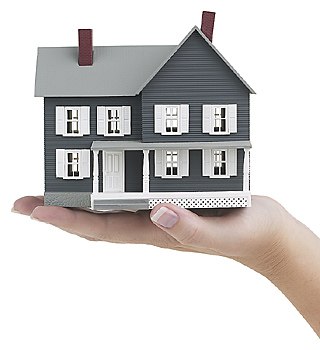 Despite its poor track record, homeownership is the bad investment idea that never seems to die. Even though the financial crisis revealed the risks that homeowners take on by making highly leveraged purchases, policymakers are stillВ developing new programs to encourage home buying. Both the Clinton and Trump campaigns are continuing the political support for homeownership that dates back to the Progressive Era. Since the New Deal, homeownership has been touted as a tool to reduce poverty and as a route to wealth-building for the middle class.
Despite its poor track record, homeownership is the bad investment idea that never seems to die. Even though the financial crisis revealed the risks that homeowners take on by making highly leveraged purchases, policymakers are stillВ developing new programs to encourage home buying. Both the Clinton and Trump campaigns are continuing the political support for homeownership that dates back to the Progressive Era. Since the New Deal, homeownership has been touted as a tool to reduce poverty and as a route to wealth-building for the middle class.
Even before the subprime-lending crisis revealed the risk that low-income borrowers took on with homeownership,В researchers have explainedВ the problems with using homeownership programs as a poverty reduction tool. Joe Cortright recently pointed outВ that homeownership is a particularly risky bet for low-income people who may only have access to credit during housing market upswings, leaving them more likely to buy high and sell low.
Even for middle- and high-income households, homeownership is a weakВ investment strategy. Politicians across the political spectrum tout homeownership as key to a middle-class existence, but homeownership will make many buyers poorer in the long run compared to renting. TheВ real estate and mortgage industries have popularized the claim that “renting is throwing your money away,” but owning a home comes with a steep opportunity cost. Renters can invest the money that they would have spent on a down payment in more lucrative stocks, and they don’t take on the risk of home maintenance.
The New York TimesВ created a popularВ calculator designed to determine whether renting or owning makes better financial sense. The calculator’s defaults assumptions are overly optimistic in favor of homeownership as the better strategy for most households.В They include a 1% rate of house price increases after accounting for inflation, but the historical average is just 0.2%. Similarly, the calculator defaults to a 2% inflation-adjusted rate of return on savings that are not spent on a down payment, while the real rate of return of the S&P 500 has historically averaged 7%. After selecting more realistic appreciation rates and investment returns, 2.2% and 9% under the assumption of 2% inflation, a household should rent rather than buy if rental housing comparable to a $250,000 home is available for $1,287 or less. In many cities where $250,000 homes are widely available, they can be rented for much less than theВ Times break even point. Expensive cities tend to have price-to-rent ratios that are much higher than in lower-cost areas, so for people in high cost of living places,В renting makes even more financial sense.
A general problem with rent-versus-buy calculators is that they ask users to set parameters for economic trends that they have little information about. Plenty of homeowners will see their asset grow much faster than the average annual rate of 0.2% after inflation, but forecasting which neighborhoods in which cities will see rapid price increases is a skill. The house flippers who lost their shirts in 2008 demonstrate that picking winning real estate investments in a complex economy isn’t easy. People who can enterВ accurate information into the calculator don’t need this tool, and it offers little financial help to those who can’t.
WhenВ making the switch from renting to buying, many people do not purchase equivalent housing that the calculator is based on. They are likely to move from an apartment with inexpensive utilities and no yard to a single-family home that is much more expensive to maintain. The new home may make its owner much happier than a small apartment, but from this perspective homeownership isВ luxury consumptionВ rather than a sound investment.
For some peopleВ homeownership does haveВ behavioral benefits from a personal finance standpoint. Some people may be able to break a cycle of living paycheck-to-paycheck by saving up for a down payment. Additionally, the portion of a mortgage payment that goes toward building equity is a mechanism of forced saving, albeit savings with a low rate of return. But from a policy perspective, does it make sense to encourage people to save up for a poor investment, or would those resources be better spent on financial literacy programs?
In addition to the relatively straightforward risk of an individual losing money on a leveraged asset, homeownership introduces systemicВ risk by reducing workers’ mobility. Research from the European Central Bank demonstrates a correlation between rates of homeownership and the size of boom and bust cycles. This data provides support for the hypothesis that homeownership exacerbates recessions by reducing workers’ ability to leave depressed areas for more promising job markets.
In someВ cases skill or luck will lead buyers to purchase a home that beats historical trends and pays off as an investment, and homeownershipВ certainly offers consumer benefits such as the freedom to customize and a sense of permanence. But pursuing policies that encourage homeownership at the expense of other investment vehicles leaves people of all income levels worse off. Often, home ownership simply leads to higher levels of housing consumption rather than wealth-building. The consequences of buying a home may be dire for low-income families, and for the middle-class the decision should be based on rational calculations rather than the homeownership cheerleadingВ that both parties offer.